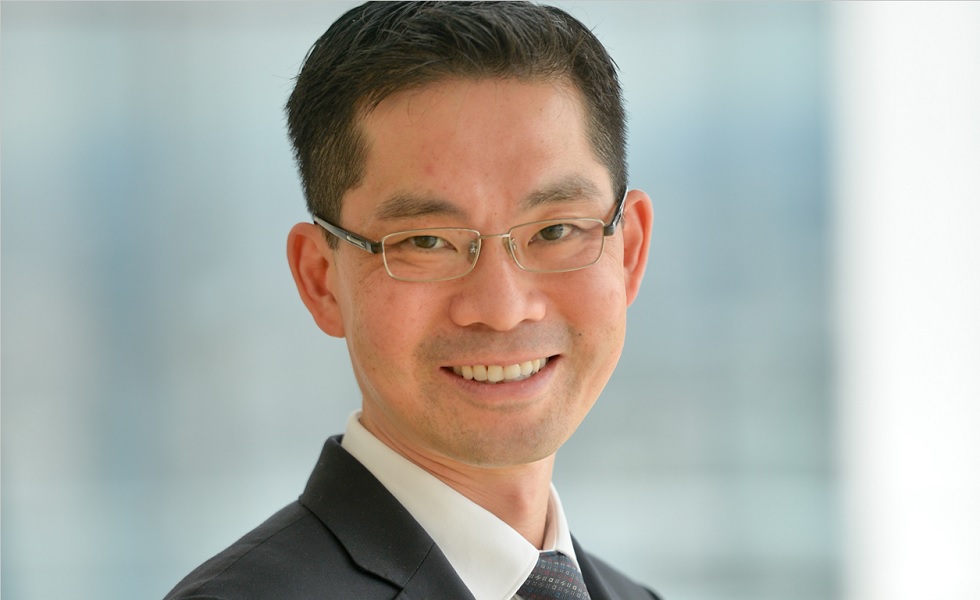New Forests Asia: The forest and land sector is at the nexus of some of the greatest challenges

The Tropical Asia Forest Fund 2 from the Australian sustainable real asset investor New Forests is this year’s winner of the Financial Investigator Impact Investing Award 2021 in the ‘Private Funds’ category. ‘Forestry is a natural climate solution that is integral to portfolio decarbonisation and the transition to net zero.’ That is the conviction of Geoffrey Seeto, Managing Director at New Forests Asia.
By Jolanda de Groot
Congratulations! The Tropical Asia Forest Fund 2 (TAFF2), managed by New Forests, has won the Financial Investigator Impact Investing Award 2021 in the ‘Private Funds’ category. Can you introduce your company and tell us more about the goal of this fund?
‘Founded in 2005, we are a global forestry investment manager headquartered in Sydney with offices in Singapore and San Francisco. We manage approximately $ 6 billion over 1 million hectares on behalf of institutional investors, including sovereign wealth funds, pension plans, insurance companies and development finance institutions. Our portfolio consists of sustainable timber plantations, conservation areas, rural land, agriculture, carbon projects and timber processing across Australia, New Zealand, Southeast Asia and the US.
We believe the forest and land sector is at the nexus of some of the greatest challenges facing the world today, including climate change, biodiversity loss, resource scarcity and the need for sustainable development that promotes equality and social inclusion. Our vision is to see forestry as a key sector helping to lead the transition to a sustainable future.
We have been investing in Southeast Asia for over a decade, with Asia being the world’s fastest growing region for wood product demand. Southeast Asia offers institutional investors competitive forestry returns compared to more established markets, diversification into new markets and the capacity to support the region’s transition to a sustainable forest industry.
The investment thesis of our fund is to invest in certified plantation forestry integrated with landscape management, nature restoration, biodiversity conservation and community benefits, while creating value through improved forest management, governance, and timber marketing and processing. It has a unique blended finance structure that supports the fund’s capacity to invest in high-impact environmental and social activities alongside commercial outcomes.’
What is the investment case for institutional investors regarding sustainable forestry in Southeast Asia?
‘Forestry as an asset class has been attractive to institutional investors due to its low correlation with other asset classes, natural inflation hedging and low volatility of returns.
Our vision is to see forestry as a key sector helping to lead the transition to a sustainable future.
It is also important to look at the demand and supply dynamics. Overexploitation of Southeast Asia’s natural forests has led to declining natural forest supply and production volumes. At the same time, there has been a rising trade in logs, lumber, pulp, woodchips and bioenergy pellets among countries in the Asia-Pacific region in order to meet the demand from the growing middle class across China, India and Southeast Asia, as well as industries exporting to global markets. Timber demand is strongly correlated with GDP, and consumption of timber continues to rise in Asia and other emerging markets.’
What does the Southeast Asian sustainable forestry market look like in terms of market size, investment opportunities and outlook? What are the most attractive markets and why are these markets attractive?
‘While there has been some historical investment in plantation forestry in Southeast Asia by both the private and public sectors, we believe that investment to date has not created a resource base sufficient to substitute for the declining supply of many timbers from natural forests. Furthermore, an investment approach integrated with sustainability is integral to ensure Southeast Asia’s forest sector creates regional economic development and opportunities for livelihoods, and is aligned with climate solutions and nature conservation.
Recent large-scale timber plantations in the region have predominantly, but not exclusively, been focused on intensive short rotation crops as a fibre resource for wood pulp production. We believe the majority of the commercial forest plantations established to date have typically not been managed for higher value end-product uses, such as durable construction, veneer/plywood, internal decorative finishing and furniture. Markets for these latter products are expected to grow with rising per capita GDP across Asia.
As a result of these market dynamics, we focus on opportunities in Malaysia, Indonesia, Vietnam, Laos and Cambodia, where it is commercially attractive to grow tropical forest plantations due to growing conditions and market access, but where there is also an opportunity to sustainably manage for higher value end-product uses.’
What is the best strategy when investing in sustainable plantation forestry in the region? What should investors be aware of? In other words: what are the risks?
‘We have been active in Southeast Asia since 2008 and we currently manage a first iteration of this fund called Tropical Asia Forest Fund (TAFF). Our experience has shown us that investing in the Southeast Asia forestry sector is complex and requires substantial due diligence, requiring investors to navigate investments where there may be incomplete information about a forestry asset. Investors need to engage with local communities and develop relationships with governments and joint venture partners.
Forests contribute to climate change mitigation through two important ways: by direct carbon sequestration and by long-term carbon storage in durable wood products.
Our global experience across forestry, investments, policy and sustainability, combined with our local knowledge, enables us to efficiently manage the assets for both financial return and sustainability outcomes. Our approach focuses on driving returns and adding value in key areas: management and resourcing, ownership structures and governance, forest management and markets and environmental and social management.’
What return could investors expect in the coming years?
‘The portfolio aims to deliver a return in the range of 14–18% nominal gross IRR, denominated in USD.’
Climate change is a hot topic. To what extent do investments in sustainable forestry contribute to the reduction of CO2-emissions?
‘Forests contribute to climate change mitigation through two important ways: by direct carbon sequestration and by long-term carbon storage in durable wood products. The climate benefits of TAFF2 will be associated with a range of activities, including the establishment of new forest plantations, switching from short-to-long-rotations in plantations (for example from a wood chip regime to a sawlog regime), revegetation of land through reforestation with native species and avoiding emissions through conservation of natural forests, also known as avoided deforestation.
The fund will engage in carbon markets, which will enhance the capability of the fund to invest in climate change mitigation activities while improving the investment returns of the fund. Furthermore, it will manage assets for high value wood products, such as furniture and flooring. These types of products are associated with long-term carbon storage.
Investors can claim the benefits of forestry through comprehensive greenhouse gas emissions accounting, which quantifies both emissions as well as removals associated with carbon sequestration and carbon storage in wood products. Forestry is a natural climate solution that is integral to portfolio decarbonisation and the transition to net zero.’
What makes TAFF2 unique compared to other sustainable funds in the market?
‘TAFF2 has a unique blended finance structure. This means the fund has two classes of units, blending capital from investors expecting commercial rates of return and from investors expecting a lower rate of return in exchange for ‘beyond business as usual’ impact. The blending of two types of capital will enable us to invest in activities associated with climate action, biodiversity conservation, and community engagement and livelihoods at scale. These 18 impact activities are closely linked to the UN Sustainable Development Goals 8, 13 and 15. Our aim is to demonstrate that integrating commercial forestry with impact activities such as ecosystem restoration and reforestation will lead to better returns, operational efficiency and long term sustainability outcomes.’









